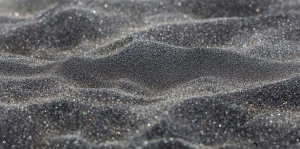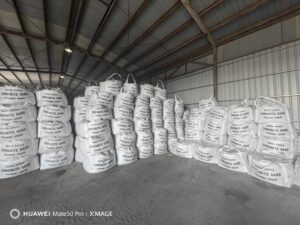Why must we use South Africa origin chromite foundry sand?
The chrome ore series products mainly include foundry grade, chemical grade, refractory grade, metallurgical grade chromium ore from South Africa, refractory and metallurgical grade chromium ore from India, chrome ore from the Philippines and other ore products from many countries. Among them, South Africa’s foundry-grade chromium ore sells well in more than 20 provinces and cities across the country and has won widespread praise from industry insiders.
Application of Chromite Ore in Casting
Chromite sand belongs to the chromium spinel class, and its main mineral composition is FeO·Cr2O3. The actual mineral is composed of a mixture of various spinels.
The density of chromite sand is 4-4.8g/cm3, the Mohs hardness is 5.5-6, and the refractoriness is >1900°C.
Main properties of chromium ore
(1) Chromium ore has good resistance to alkaline slag and does not react with iron oxide, etc. Therefore, in practical applications, chromium ore can avoid thermochemical sand sticking;
(2) During the molten metal casting process, the chromium ore itself undergoes solid-phase sintering, preventing the penetration of molten metal and thereby preventing mechanical sand sticking;
(3) The thermal conductivity of chromium ore is several times greater than that of silica sand, which can increase the cooling rate of castings. Therefore, chromium ore can play the role of an external cold iron in practical applications;
(4) The harmful impurity in chromium ore is carbonate (CaCO3·MgCO3). When it comes into contact with high-temperature metals, it decomposes CO2, which can easily cause pores in castings; usually, chrome ore containing carbonate is processed at 900°C -Roasted at high temperature of 950°C to decompose the carbonate in it.
(5) The impact of the particle size of chromium ore on its refractoriness. The particle size of chromium ore can significantly affect its refractoriness. In the past, it was believed that excessively coarse grains would reduce the smoothness of the casting surface. However, a certain thickness of paint is usually sprayed on the surface of sand molds and sand cores made of chromium ore, so that the smoothness of the casting surface is hardly affected.
Generally, the suitable particle size of the sand used for molding large steel castings is 40/70 mesh, and the suitable particle size of the molding sand used for medium and small parts is 50/100 mesh. There are also some special cases, such as: some small water pump industries, considering economic factors, use chromium ore to replace zircon sand. The chromium ore purchased by these factories requires very fine grain, requiring 70/140 mesh, or even 100/200 mesh, etc.


